#ancientegyptianhistory
Text
youtube
#AncientEgyptianReligion#AncientHistory#Ancientmythandreligion#OldKingdom#Egyptology#ancientegyptianhistory#ancientegypt#ancienttechnology#ancientmysteries#ancientmesopotamia#AncientEgyptianpyramids#purposeofthepyramids#pyramidsofgiza#pyramids#denderalightbulb#egyptianshadelectricity#ancientelectricity#baghdadbattery#ancientaliens#pyramidspowerplant#pyramidswerepowerplants#pyramidsinside#egyptpyramids3d#sphinx#egypt#ancient#freeenergy#nikolatesla#powerplant#pyramidsdocumentary
0 notes
Text
Prince Pentawere: The Screaming Mummy
Emerging from the depths of ancient Egyptian history, Prince Pentawere, better known as the "Screaming Mummy," remains an enigmatic figure shrouded in intrigue and controversy. His life, marked by ambition, betrayal, and a gruesome demise, has captured the imagination of historians and Egyptologists for centuries.
A Life of Privilege and Ambition
Born into the illustrious 20th Dynasty, Prince Pentawere was the son of Pharaoh Ramesses III, a powerful and influential ruler who reigned over Egypt for over three decades. As a prince, Pentawere enjoyed a life of privilege and luxury, growing up in the opulent palaces of the New Kingdom.
However, beneath the veneer of wealth and status, Pentawere harbored a deep-seated ambition to ascend to the throne. His mother, Tiye, a secondary wife of Ramesses III, is believed to have played a significant role in fueling Pentawere's aspirations for power.
The Harem Conspiracy: A Plot to Seize the Throne
As Ramesses III's reign progressed, tensions within the royal household grew. Pentawere, increasingly impatient to assume his father's mantle, embarked on a treacherous path to seize power. In 1155 BCE, he orchestrated a plot known as the "Harem Conspiracy," a complex scheme involving multiple co-conspirators, including his mother, Tiye.
The plot aimed to overthrow Ramesses III and place Pentawere on the throne. The conspirators planned to use magic and violence to eliminate the pharaoh and his supporters, paving the way for Pentawere's ascension.
A Betrayal and a Tragic Demise
Despite its meticulous planning, the Harem Conspiracy was ultimately foiled. The pharaoh's loyalists discovered the plot and swiftly apprehended the conspirators. Pentawere, along with his mother and other accomplices, was brought to justice.
The Judicial Papyrus of Turin, an ancient Egyptian legal document, details the proceedings against Pentawere and his co-conspirators. The document describes how Pentawere was offered the chance to commit suicide rather than face execution.
Faced with this ominous choice, Pentawere chose to take his own life. The manner of his suicide remains unclear, but some believe he may have ingested poison or hanged himself. Whatever the method, his death was likely swift and agonizing.
The Screaming Mummy: A Gruesome Discovery
In 1881, during the excavation of the Deir el-Bahari cache, archaeologists unearthed an unusual mummy. The body, wrapped in sheepskin and bearing a contorted expression, its mouth agape in an eternal scream, was later identified as Prince Pentawere.
The mummy's horrified expression sparked speculation about the cause of Pentawere's death. Some suggested that the muscles of his face were frozen in a scream due to the method of his suicide, while others believed it was a deliberate act, intended to convey his anguish and despair.
A Legacy of Intrigue and Mystery
The story of Prince Pentawere serves as a reminder of the complexities and dark undercurrents that often pervade the corridors of power. His tale of ambition, betrayal, and a horrific death continues to fascinate and intrigue, adding another layer of mystery to the captivating narrative of ancient Egyptian history.
The "Screaming Mummy" remains a poignant symbol of Pentawere's tragic fate, a stark reminder of the consequences of ambition and the fragility of life in the ancient world.
#PrincePentawere#ScreamingMummy#AncientEgypt#MysteriousIndividual#Egyptologists#MummifiedRemains#Archaeologists#UntimelyDeath#ScientificMethods#Research#MummificationProcess#HorrifiedExpression#CruelFate#HaremConspiracy#RamessesIII#Tiye#JudicialPapyrusOfTurin#DeirElBahriCache#AncientEgyptianHistory#AmbitionBetrayalDeath#LegacyOfPentawere#HiddenStoriesOfAncientEgypt
0 notes
Text
The Pyramid Builders, Book 3: Khaba by Max Overton
The third dynasty of the Old Kingdom of Egypt saw an extraordinary development of building techniques, from the simple structures of mud brick at the end of the second dynasty to the towering pyramids of the fourth dynasty. Just how these massive structures were built has long been a matter of conjecture, but history is made up of the lives and actions of individuals; kings and architects,…

View On WordPress
#Ancient Egypt#ancient egypt historical fiction books#ancient egypt historical fiction novels#ancient egyptian#ancient Egyptian civilization#ancient Egyptian history#ancient egyptian novels#AncientEgypt#ancientegyptian#ancientegyptiancivilization#ancientegyptianhistory#bookblogger#books#books about ancient civilizations#historical#historical fiction#pharaoh#pharoah fiction#reading#WritersExchangeEPublishing
0 notes
Text

ICYMI: Book Review of #EgyptsGoldenCouple by #JohnDarnell and #ColleenDarnell. A skillful blend of fact and fantasy to reveal the lives of King Tut’s parents. https://suanneschaferauthor.com/book-review-egypts-golden-couple #AncientEgyptianHistory #ArchitecturalHistory #WomenInHistory
#KingTut
#Nefertiti
#AncientEgyptianHistory#ArchitecturalHistory#WomenInHistory#KingTut#Nefertiti#bookstagram#am reading
0 notes
Text
Akhenaten: Defying Tradition, Embracing Immortality
Introduction: Akhenaten, the 10th king of Egypt's 18th Dynasty, broke from tradition by rejecting the worship of Amun and embracing monotheism, focusing on the sun disk Aten. Despite attempts to erase him from history, his unique legacy endures.
Monotheism Amid Polytheism: In a dynasty known for majestic pyramids, Akhenaten's departure was notable. Rejecting Amun, he worshiped Aten, challenging established religious norms and reshaping ancient Egypt's spiritual landscape.
Erasure of Legacy: Unlike his predecessors, Akhenaten lacked a pyramid, and after death, his tomb was deliberately destroyed to erase his name. This attempt to deny him immortality through remembrance was a departure from traditional pharaonic burial rites.
The Unfading Legacy: Remarkably, references to a pharaoh pledging allegiance to Prophet Yusuf in Holy Books immortalized Akhenaten. Though not named, hieroglyphs on his tomb confirmed this allegiance, ensuring his place in history and transcending attempts to obliterate his name.
Conclusion: Akhenaten's defiance of religious norms and the subsequent attempts to erase him from history highlight a complex interplay between mortal actions and enduring legacies. His unexpected recognition in sacred texts solidifies his place in the annals of ancient Egyptian history, showcasing the resilience of an unconventional pharaoh.
#AkhenatenLegacy #MonotheisticPharaoh #AncientEgyptRevolution #DefyingTradition #ImmortalizedInTexts #18thDynasty #AtenWorship #UnconventionalHistory #LegacyOverErasure #ProphetYusufConnection #AncientEgyptianHistory #HieroglyphicRecognition #EnduringLegacy #PharaohsRevolt #HistoryUnveiled
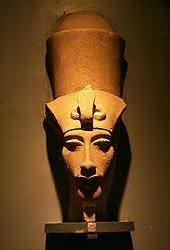
0 notes
Video
youtube
Join this channel to get access to perks: https://www.youtube.com/channel/UCzDhVwKI6--x2scvEAI6Jow/join Welcome to this video on the history of Egyptian Pyramids. We will take a look at why and how these majestic structures were built, as well as their role in ancient Egypt culture. Learn about Ancient Egyptians beliefs that Pharaohs became part gods after passing away, which explained building such impressive tombs for them. The Great Pyramid of Giza is known around the world for being one of the Seven Wonders of the World, but there are plenty more than have been discovered throughout Egyptian history! Join us on a journey across ancient times and explore what makes these pyramids so special . With facts like who was actually buried inside them and spectacular images from inside its monuments you won't want to miss out on this interesting exploration into The Prince Of Egypt fantastical heritage #history #egypt #AncientEgypt #discovery #EgyptianPyramids, #AncientEgypt, #PrinceOfEgypt, #AncientEgyptianHistory, #EgyptianCivilization, #PyramidFacts, #EgyptianPyramids101, #EgyptianCulture, #EgyptianHistoryTimeline, #EgyptianPharaohs
0 notes
Photo

What are you all reading? 📚 📖 👓 📕 📘 Authors: Sohrab Ahmari, Geraldine Pinch, Mary Lefkowitz, James Romm, and Toby Wikinson #tobywilkinson #marylefkowitz #jamesromm #geraldinepinch #sohrabahmari #book #literature #writing #english #greek #roman #islamic #religious #mindful #chaos #greece #ancientgreece #ancientrome #ancientromanhistory #ancientgreekhistory #books #author #histories #mythology #egypt #ancientegypt #ancientegyptianhistory (at Broken Arrow, Oklahoma) https://www.instagram.com/p/CezeA8zszKV/?igshid=NGJjMDIxMWI=
#tobywilkinson#marylefkowitz#jamesromm#geraldinepinch#sohrabahmari#book#literature#writing#english#greek#roman#islamic#religious#mindful#chaos#greece#ancientgreece#ancientrome#ancientromanhistory#ancientgreekhistory#books#author#histories#mythology#egypt#ancientegypt#ancientegyptianhistory
0 notes
Text
Mummy Brown: A Most Tragic Hue That Everyone Used
Millions of people walk the hallowed halls of the Louvre every year to see some of the most important masterpieces of all time with their own eyes. With 35,000 pieces on display there is a lot to take in, and among them is Interior of a Kitchen by Martin Drölling. The scene is tranquil, showing an illuminated country kitchen where a young girl works on her needlework, another woman sits in her chair, and a girl sits on the floor playing with a cat. The detail is exquisite, and although the view from the window is bright the majority of the scene is painted in varying shades of brown, and it is this brown hue that places Interior of a Kitchen in a unique category. Drölling painted the work in 1815, but his paint had origins in ancient times.

Interior of a Kitchen by Martin Drölling. Image via Wikipedia.
In the Medieval age medicine was still in its infancy, but one substance that was highly sought after for its medicinal purposes was bitumen. Referred to as early as the twelfth century, it was a substance believed to cure nearly any ailment. Bitumen was found naturally in the earth in the Middle East region, but rather than extracting it from the ground, it was believed that it could be obtained from another source, the long-dead bodies of ancient Egyptians. The Persian word for bitumen was “mum” or “mumiya” which lent itself to the word “mummy” and the black color of the wrapped corpses led people to (falsely) believe they were soaked in bitumen during the embalming process. It was impossible to extract the alleged bitumen from the mummies, so they ground up the dead ancient bodies and used that instead.
By the fifteenth century it was commonplace for merchants to visit Egypt and send large shipments of mummies back to Europe for an eager consumer looking to grind them up for medicine. At the time there were incalculable numbers of mummies at their disposal and according to Thomas Pettigrew’s History of the Egyptian Mummy the author writes, “No sooner was it credited that mummy constituted an article of value in the practice of medicine than many speculators embarked in the trade; the tombs were sacked, and as many mummies as could be obtained were broken into pieces for the purpose of sale.” After being lowered into the tombs merchants picked their new cargo and paid the inexpensive prices before loading their ships with bodies and parts that were doomed for the grinders of Europe. Once reduced to powder, the dead would be mixed into topical balms or straight into drinks to be immediately ingested. The demand for mummy medicine ran high with little to no consideration if the body was old, young, male, female, or cause of death. It was a trend that continued well into the 18th century.
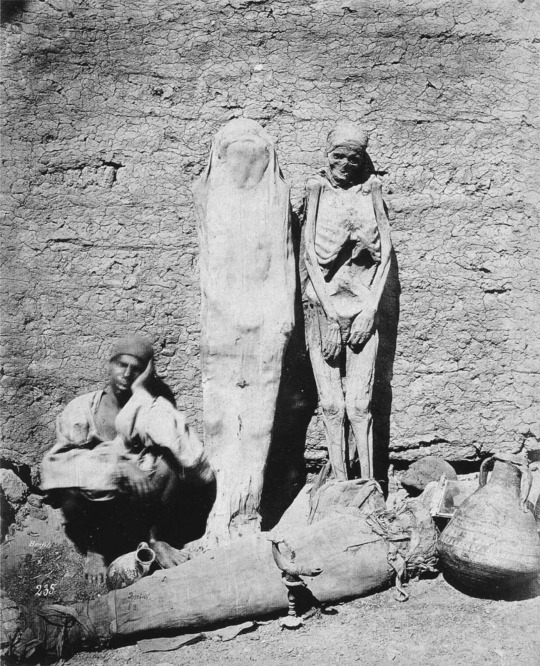
Merchant selling mummies on the street. Image via rarehistoricalphotos.com.
By the 1830s the general public became obsessed with all things ancient Egypt and relics from the time became highly desired collectible pieces with a mummy being at the top of everyone’s wish list. The ferocity in obtaining mummies sent people tearing into sacred sites and haggling with sellers on the streets who claimed the bodies they were selling were genuine. The monk Father Géramb stated in 1833 that “it would be hardly respectable, on one’s return from Egypt, to present oneself without a mummy in one hand and a crocodile in the other.” Once brought into the homes of Europe as unfortunate souvenirs the fascination with Egypt’s ancient dead manifested in mummy “unwrappings” or “unrollings” that began as scientific undertakings but evolved into public events that would often sell out. As the wrappings were unfurled those gathered would delight in the trinkets that would fall from them, the pieces of paper tucked inside, and the sight of the blackened body before them.
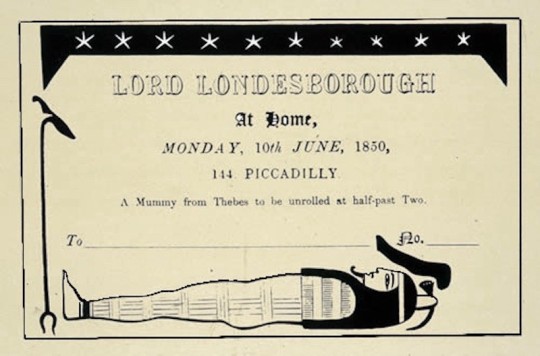
Flyer for a mummy unwrapping circa 1850. Image via medium.com.
Considering how Europeans strived to incorporate ancient Egyptians into their daily lives it is not surprising that they also made them a part of their art. With a shade resembling burnt umber, Mummy Brown was made by mixing white pitch, myrrh, and the ground-up remains of ancient Egyptian mummies. Beginning in the 16th century the paint became extremely popular with artists because of the unique pigment that could only be obtained from the mummies because of the specific substances used in the mummification process.
The use of Mummy Brown reached its height in the mid-eighteenth to nineteenth centuries when it was used by such famous artists as Sir William Beechey, Edward Burne-Jones, Lawrence Alma-Tadema, Eugene Delacroix, and Martin Drölling who used the paint extensively in Interior of a Kitchen. What is unclear though, is if artists knew exactly what they were painting with.
One artist who was unaware of his paint’s dark origins was pre-Raphaelite painter Edward Burne-Jones. As recalled by his nephew, author Ruyard Kipling, his uncle was spending a day with fellow artist Alma Tadema in the 1860s when he learned that the pigment’s name was not a metaphor, that the paint he had been using was in fact made from ground up mummies. Deeply disturbed by this, Burne-Jones went into his studio and came back downstairs stating that if it was made from dead Pharaohs then the tube in his hand needed to be buried immediately and with proper honor. According to Kipling’s later account of the day, “So we all went out and helped – according to the rites of Mizraim and Memphis, I hope – and to this day I could drive a spade within a foot of where that tube lies.”

Edward Burne-Jones. Image via Wikipedia.
The origins of Mummy Brown were never kept secret, but over the centuries people seemed to forget that the color’s name was literal. As the facts of the paint’s origin came back into collective knowledge people grew increasingly uncomfortable with the idea of painting with ancient human remains. C. Roberson and Co., one of the leading colorists of the 19th and 20th centuries, included Mummy Brown in their catalog until 1933. It took just over three more decades for the production of Mummy Brown to be officially declared over. The reason was as simple as it was tragic, there were no more mummies to use for paint. As stated by the managing director of C. Roberson and Co., “We might have a few odd limbs lying around somewhere, but not enough to make any more paint. We sold our last complete mummy some years ago for, I think, £3. Perhaps we shouldn't have. We certainly can't get any more”

Tube of Mummy Brown paint. Image via artinsociety.com.
Today the color Mummy Brown is made from materials completely unrelated to human remains. While it is known when the production of the color was finally stopped, it is difficult to estimate just how many works of art were created using the paint. In an unfortunate twist, many of the artists active at the height of Mummy Brown’s usage painted scenes of ancient Egypt making it entirely possible that the sacred deceased of Egypt were taken from their tombs only to be ground up and used to paint them.
Sources:
Ground Up Mummies Were Once an Ingredient in Paint by Rose Eveleth. https://www.smithsonianmag.com/smart-news/ground-mummies-were-once-ingredient-paint-180950350/
The Life and Death of Mummy Brown by Philip McCouat.
http://www.artinsociety.com/the-life-and-death-of-mummy-brown.html
Was This Masterpiece Painted With Ground Mummy? by Kristen Romey.
https://www.nationalgeographic.com/news/2016/09/mummy-art-painting-delacroix-pigment-ancient-Egypt/
#Husheduphistory#featuredarticles#history#AncientEgypt#AncientEgyptianHistory#Mummy#Mummies#arthistory#colorhistory#pigmenthistory#painting#paintinghistory#tragichistory#forgottenhistory#regrettablehistory#weirdhistory#strangehistory#creepyhistory#whatsinaname#historyiswild#historyisnotborning#historyclass#artclass#disrespect#shockinghistory#sadhistory#ingredients#paint#burntumber#pharoah
10 notes
·
View notes
Photo

Still there, after all these years 🇪🇬 . . . . . #ancientegyptianreligion #ancientegyptian #ancientegyptiantattoo #egyptian #history #egipto #ancientegyptrules #ancientegyptianart #ancientegyptiantemple #art #ancientegyptianyoga #archaeology #ancientegypthistory #ancientegyptianjewelry #thisisegypt #ancientegyptiancivilization #egypt #ancient #ancientegyptianhistory #ancienthistory #pyramids #ancientegyptbooks #ancientegyptiangoddess #egyptology #ancientegyptians #ancientegyptianmusic #ancientegyptiannecklace #ancientegyptmysteryschools #ancientegyptianstyle #ancientegypttattoo https://www.instagram.com/p/CJFxStUF6BZ/?igshid=1vfvqiz7j6751
#ancientegyptianreligion#ancientegyptian#ancientegyptiantattoo#egyptian#history#egipto#ancientegyptrules#ancientegyptianart#ancientegyptiantemple#art#ancientegyptianyoga#archaeology#ancientegypthistory#ancientegyptianjewelry#thisisegypt#ancientegyptiancivilization#egypt#ancient#ancientegyptianhistory#ancienthistory#pyramids#ancientegyptbooks#ancientegyptiangoddess#egyptology#ancientegyptians#ancientegyptianmusic#ancientegyptiannecklace#ancientegyptmysteryschools#ancientegyptianstyle#ancientegypttattoo
0 notes
Link
When I was a little girl, my mom had this bracelet that always caught my attention. She called it a scarab bracelet, and it had many different colored rocks that were etched and encircled by gold. Each of the encircled stones were connected to one another, forming the bracelet. I loved that bracelet because it was so colorful, and as a young girl, I thought it was so ritzy. I haven’t seen the bracelet for years, but when Jenny and I went to Egypt, I discovered the scarab beetle was more than just a cool piece included in beautiful jewelry. It was scary to the ancient Egyptians. I found this quite unusual—a scarab, or dung, beetle was sacred? How? Why?
0 notes
Photo

KS2 - years 3 and 4. Ancient civilisations - Egypt. Try ‘The Blue Crown’, as a school reader and capture the whole classes imagination. Who was Nefertiti? Why did she wear a Blue Crown? What was it like in those days? An exciting adventure that brings two girls to a realisation that their worlds are not dissimilar. #ks2 #ks2teacher #ancientegyptianhistory #valleyofthekings #nefertiti #egyptiantomb #amazonbook #goodread #luxorcity #schoolhistory #ancientegyptian https://www.instagram.com/p/B1oG1vJnYUe/?igshid=3z83yg8j82ol
#ks2#ks2teacher#ancientegyptianhistory#valleyofthekings#nefertiti#egyptiantomb#amazonbook#goodread#luxorcity#schoolhistory#ancientegyptian
0 notes
Text
youtube
#AncientEgyptianQueen#QueenHenutsen#FourthDynastyofEgypt#GizaPlateau#khufusmother#TombDiscovery#ArchaeologicalMysteries#Pharaoh'sFamilyTree#GizaPyramids#AncientBurialPractices#Hetepheres'Treasures#HistoricalArchaeology#RoyalTombs#EgyptologyInsights#AncientEgyptianCivilization#FuneraryPractices#ArchaeologicalDiscoveries#SphinxConnection#AncientEgyptianHistory#HenutsenBurialChamber#AncientEgyptianQueenship#PyramidConstructionTechniques#GizaPlateauExcavations#RoyalBurialTraditions#HiddenTombs#PharaonicFamilyDynamics#SphinxMystery#ArchaeologicalBreakthroughs#AncientEgyptianRoyalWomen#PyramidComplexExploration
0 notes
Text
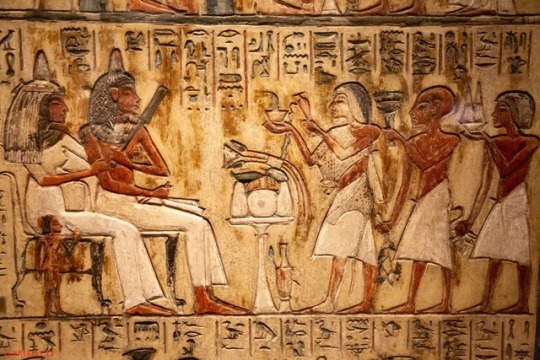
TORINO-A priceless artifact from the largest museum of ancient Egyptian history outside Cairo, Museo Egizio. #Torino #MuseoEgizio #AncientEgyptianHistory #Italy
22 notes
·
View notes
Text
The Pyramid Builders, Book 2: Sekhemkhet by Max Overton
The third dynasty of the Old Kingdom of Egypt saw an extraordinary development of building techniques, from the simple structures of mud brick at the end of the second dynasty to the towering pyramids of the fourth dynasty. Just how these massive structures were built has long been a matter of conjecture, but history is made up of the lives and actions of individuals; kings and architects,…

View On WordPress
#Ancient Egypt#ancient egypt historical fiction books#ancient egypt historical fiction novels#ancient egyptian#ancient Egyptian civilization#ancient Egyptian history#ancient egyptian novels#AncientEgypt#ancientegyptian#ancientegyptiancivilization#ancientegyptianhistory#bookblogger#books#books about ancient civilizations#historical#historical fiction#pharaoh#pharoah fiction#reading#WritersExchangeEPublishing
1 note
·
View note
Text
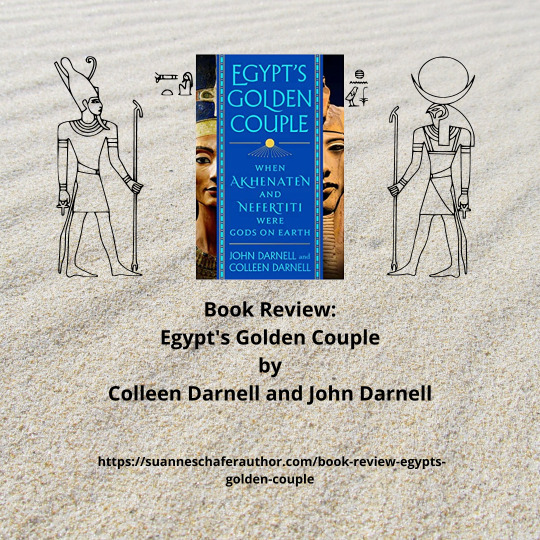
Book Review: #EgyptsGoldenCouple by #JohnDarnell and #ColleenDarnell. A skillful blend of fact and fantasy to reveal the lives of King Tut’s parents. https://suanneschaferauthor.com/book-review-egypts-golden-couple #AncientEgyptianHistory #ArchitecturalHistory #WomenInHistory
#KingTut
#Nefertiti
#AncientEgyptianHistory#ArchitecturalHistory#WomenInHistory#KingTut#Nefertiti#bookstagram#am reading
0 notes
Photo

😍👑😍 . . #repost @ancientegyptianhistory ・・・ Nefertiti is one of the most famous women of ancient Egypt. She was the great royal wife of King Akhenaten and “step mother” to the famous Tutankhamun. This bust is believed to have been crafted in 1345BC by Thutmose and is nearly half a meter tall (48cm). It was found in Thutmose’s workshop in Amarna and is now on display in the Neues Museum, Berlin, Germany. #neuesmuseum #nefertiti #tutankhamun #ancientegypt #beautiful #learningathome #elearning #statue #amarna #akhenaton #akhenaten #egypt #egyptian #museum #quarantinelife #picoftheday #learningresources #berlin https://www.instagram.com/p/B-slfKSg9le/?igshid=bqjewrsk2iws
#repost#neuesmuseum#nefertiti#tutankhamun#ancientegypt#beautiful#learningathome#elearning#statue#amarna#akhenaton#akhenaten#egypt#egyptian#museum#quarantinelife#picoftheday#learningresources#berlin
0 notes